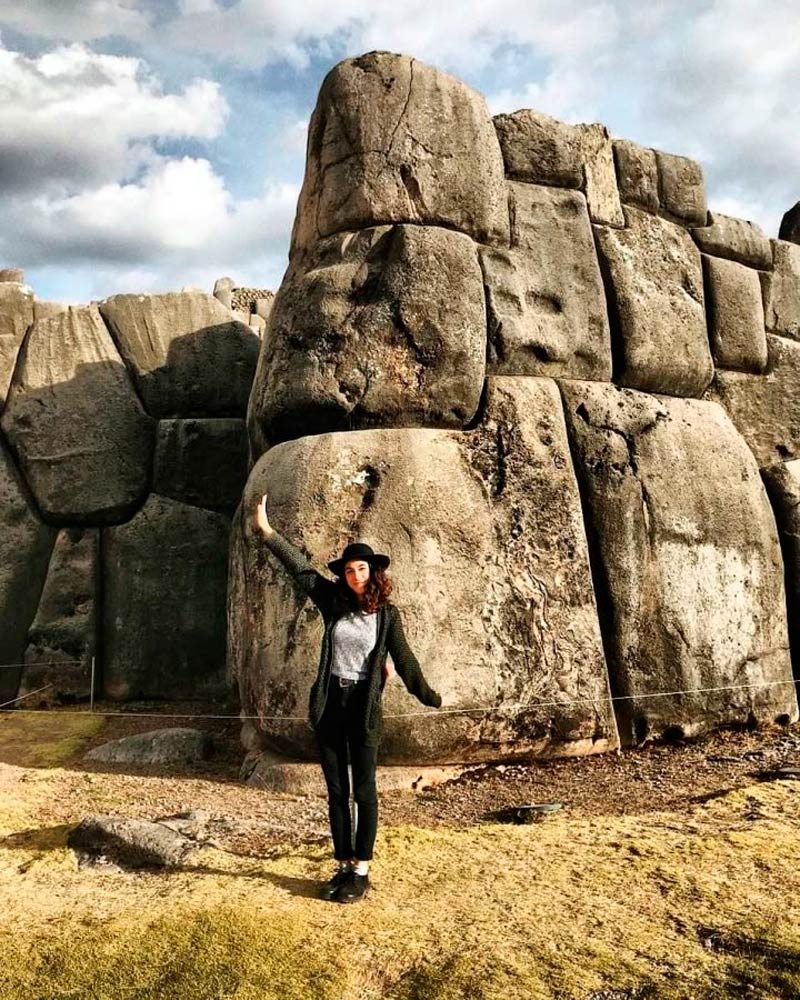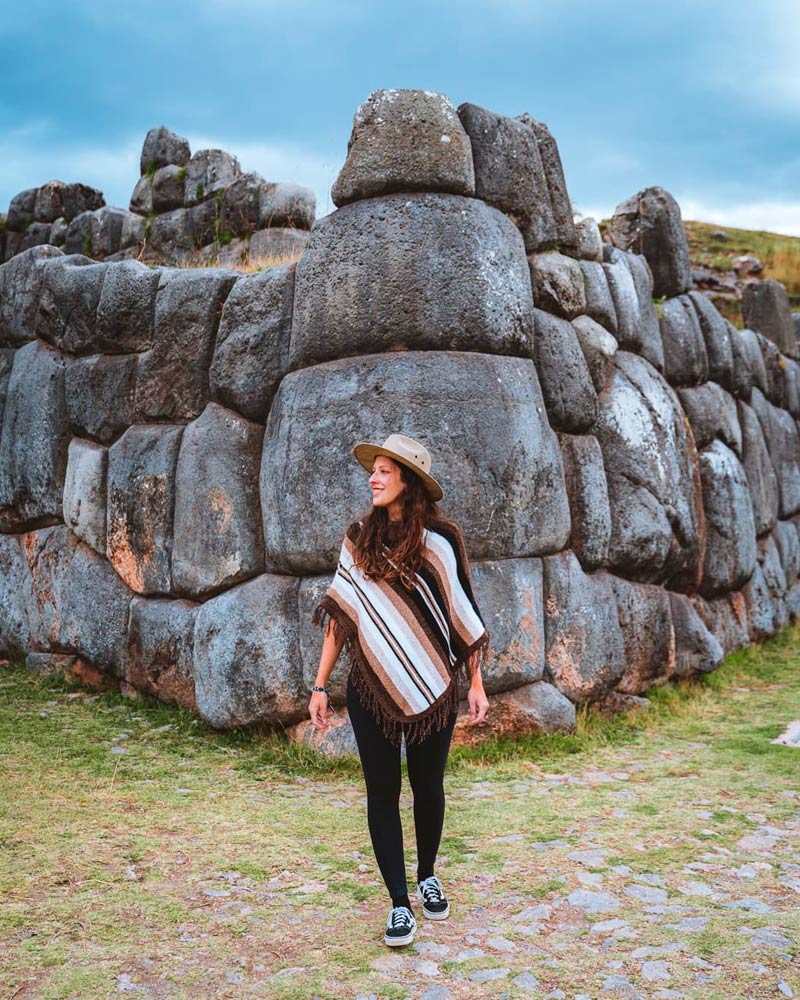
Sacsayhuaman is one of the most impressive archaeological sites in Cusco, famous for its enormous stone walls, which reflect the amazing Inca engineering. Getting to this place is easy and there are several options: you can hire a city tour cusco, take a taxi, go in your own vehicle, or even walk up to enjoy the urban landscape and panoramic views of Cusco.
If you choose to walk, from the Plaza de Armas you can go up Suecia street, turn towards Huaynapata, and continue on Resbalosa. After passing the church of San Cristóbal, turn right and follow the road; you will soon arrive at Sacsayhuaman. In addition to the walk, many visitors take the opportunity to visit other nearby sites such as Qenqo, Puca Pucara, and Tambomachay, as they are often included in the area's tourist circuits.
The archaeological site ofSacsayhuaman is located just 2 kilometers north of the Plaza de Armas in Cusco, at an altitude of 3,700 meters above sea level. This impressive complex extends over more than 3,000 hectares on a hill surrounded by mountains, offering panoramic views of the city and the valley. Its surroundings are full of history and nature, with abundant Andean flora and typical fauna, where it is common to see llamas grazing and falcons flying over the place.
Around the year 1450, the Inca Pachacutec, ninth ruler of the Empire, ordered the construction of an impressive sanctuary where the military victories of his son Túpac Yupanqui would be celebrated.
To build this monumental work, more than 20,000 workers were mobilized from different regions of the empire, recruited through the mitas system. They transported enormous blocks of stone from various quarries in Cusco and assembled them with amazing precision, achieving a perfect fit without the need for tools like mortar.
The architectural design of Sacsayhuaman was part of the great urban plan of Pachacútec, who, when he designed the city of Cusco, gave it the shape of a puma, a sacred animal of the Kay Pacha (Andean earthly world). In this design, Sacsayhuaman represented the head of the feline, a symbol of strength and power.
Note: Although many people call it a "fortress", archaeological studies indicate that Sacsayhuaman had a mainly ceremonial character, although it also served as a center for strategic defense.
In Quechua, Sacsayhuaman means "place where the falcon is satisfied". The name is likely related to the presence of these birds in the area, which were considered very important in Andean culture. Although its monumental design and giant walls suggest a fortress, archaeological studies suggest it was also a very important ceremonial center.
When the Spanish arrived in the 16th century, impressed by its architecture and defensive appearance, they called it a "fortress". During the Inca rebellion of Vilcabamba in 1536, the site was key: Inca troops fought off a Spanish attack, confirming its military use.
Its construction began under the rule of the Inca Pachacutec in the 15th century and was continued by his successors, finishing in the time of Huayna Capac in the early 16th century. Later, in 1536, Manco Inca, leader of the resistance against the Spanish, used Sacsayhuaman as a strategic bastion in one of the most significant battles of the era. After the conflict, much of the construction was taken apart by the colonizers, who used its stones to build churches and houses in Cusco. Today, only about 20% of the original complex is preserved.
Although many people consider Sacsayhuaman only as an Inca fortress, modern research indicates that it was mainly designed as a ceremonial center and temple dedicated to the Sun (Inti), the supreme deity of the Inca culture.
Its location and the scale of its design also gave it a defensive role, making it a multifunctional space within the organization of Inca Cusco.
Today, Sacsayhuaman is one of the most impressive settings for the celebration of the Inti Raymi or "Festival of the Sun", which every June 24 revives the ancient Inca ceremonies in honor of the sun god. Thousands of national and foreign visitors gather on its esplanade to witness this artistic representation.
The fortress is a masterpiece of Inca architecture, known for its cyclopean construction: its walls are made of enormous blocks of stone that fit together perfectly, a technique that still amazes archaeologists and engineers today. Some of these stones are 9 meters high, 5 meters wide, and 4 meters thick, with an estimated weight of up to 125 tons.
The complex has three stepped platforms, each with an average length of 360 meters, connected by stairs and access doors that reveal the strategic planning of its design. At the top is the Throne of the Inca, carved directly into the rock and oriented towards the main esplanade, from where the sovereign could witness ceremonies and military acts. Very close by is the "Rodadero", a natural formation of polished rock that the ancient Incas used for recreational purposes and that today continues to be a curiosity for visitors.
Cunningham, is the author of the book The Map That Talked that delves into the mysteries of prehistory. It has departed from the more orthodox theories to suggest that the builders of Sacsayhuaman developed an intricate writing system that dates back 30,000 years! In that case, it would not be the Incas its architects but an advanced civilization of which we have lost memory.
In his opinion, this ancient form of writing constitutes the basis of the geometric shapes that would take into account the movement of the Moon and the Sun. According to his mystery of Sacsayhuaman, the astronomical values considered as central to anticipating eclipses become "angular values". Those that form the stones of the monumental wall (see map).
In astronomical terms it is a mixture of the values used to measure time (sidereal month 27.32 days) and the values to determine when the Moon, the Earth and the Sun align at the nodes. This includes the use of the moon's 18.6-year nodal cycle, the 6,511 draconic month period between eclipse seasons, and also the 5.1-degree tilt angle of the moon's orbit. The remaining values are usually either the values of the middle of the various lunar terms, or values linked to the 11-day difference between the lunar and solar years.
Cunningham suggests that his analysis of the fortress of Sacsayhuaman is only a case of astronomical "writing" from the Stone Age. It has found similar shapes in a large number of sites in the past on several continents: In the Lascaux and Chauvet caves in France, the bone carved in Ishango, (Africa) and a stone carved from around 30,000 years ago in a Paleolithic site in Shuidonggou, China, which is the oldest and the one that establishes the antiquity of the "language".
Cunningham's question is whether the huge polygonal walls of Sacsayhuaman align with the exact astronomical values used in the Muiscan figurines of Colombia and the giant Atacama of Chile. And, the surprising result is yes.
 |  |
Getting to Sacsayhuaman is undoubtedly one of the frequently asked questions that tourists ask themselves when arriving in Cusco. Here are some alternatives to get to this impressive archaeological site:
Sacsayhuaman offers an amazing view of Cusco. You can see the summits of Ausangate, Pachatusan and Cinca. These peaks were considered sacred to the Incas. The archaeological complex itself has very amazing places, some of them with their own history and meaning.
According to oral tradition, many people tried to find the end of the largest tunnel without success. Some did not even make it out. This tunnel is believed to lead to the Coricancha (Temple of the Sun). Currently, the entrance to this chincana is closed.
Sacsayhuaman has a dry and temperate climate. The average temperature per year is 12°C. There are 2 seasons during the year. The rainy season (from November to March) presents the greatest amount of fluvial rainfall. The dry season (from April to October) has hotter days in the day and colder at night.
To visit Sacsayhuaman you need the Cusco Tourist Ticket. Another option is to hire the service of a ‘City Tour’.
Sacsayhuaman opens its doors from 7 a.m. at 6 p.m.
It is the most complete ticket as it includes more attractions (16). It is valid for 10 days from the date of purchase.
Here are the attractions included in said ticket:
With 3 possible circuits, it is perfect if your budget is tighter, since you can spend a little time in each place and visit specific attractions of your interest.
Beyond the majesty of Machu Picchu, the surroundings of Cusco offer a variety of experiences that allow you to get to know the culture, history, and landscapes of Andean Peru up close. From traditional towns to little-explored natural wonders, there is a lot to discover just a few kilometers from the imperial city. If you are looking for new adventures outside the usual, here we present the places you can't miss: